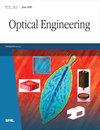利用偏振多光谱激光雷达对材料和表面粗糙度进行分类
IF 1.2
4区 工程技术
Q4 OPTICS
引用次数: 0
摘要
摘要多光谱光探测与测距(LiDAR)是一种新兴的主动遥感技术,它将距离测量与光谱测量相结合。众所周知,反射光谱可用于材料分类。然而,光谱还取决于其他表面参数,尤其是粗糙度。在此,我们建议将多光谱技术扩展到偏振多光谱激光雷达技术,并引入非偏振和线性偏振反射光谱作为材料和粗糙度分类的附加特征。利用台式原型仪器,我们展示了获取非偏振和线性偏振反射光谱的可行性和益处。我们分析并解释了使用两种不同的光谱分辨率(10 nm 和 40 nm)测量得到的光谱,这些光谱是对由五种不同材料组成的测试样本以及两种不同程度的表面粗糙度进行测量得到的。我们使用线性支持向量机证明了不同特征在材料和粗糙度分类方面的潜力。我们发现,非偏振反射光谱非常适合对材料进行分类,而线性偏振光谱则适合对粗糙度进行分类。在这两种情况下,其性能都比使用多光谱激光雷达提供的标准反射光谱要好得多。我们认为偏振多光谱激光雷达是一种可显著提高遥感应用中表面和材料探测能力的技术。本文章由计算机程序翻译,如有差异,请以英文原文为准。
Classification of material and surface roughness using polarimetric multispectral LiDAR
Abstract. Multispectral light detection and ranging (LiDAR) is an emerging active remote sensing technique that combines distance and spectroscopy measurements. The reflectance spectrum is known to enable material classification. However, the spectrum also depends on other surface parameters, particularly roughness. Herein, we propose an extension of multispectral to polarimetric multispectral LiDAR and introduce unpolarized and linearly polarized reflectance spectra as additional features for classifying materials and roughness. Using a bench-top prototype instrument, we demonstrate the feasibility and benefit of acquiring unpolarized and linearly polarized reflectance spectra. We analyze and interpret the spectra obtained with two different spectral resolutions (10 and 40 nm) from measurements on test specimens consisting of five different materials with two different levels of surface roughness. Using a linear support vector machine, we demonstrate the potential of the different features for enabling material and roughness classification. We find that the unpolarized reflectance spectrum is well suited for classifying materials, and the linearly polarized one for classifying roughness. In both cases, the performance is much better than using a standard reflectance spectrum offered by multispectral LiDAR. We identify polarimetric multispectral LiDAR as a technology that may significantly enhance surface and material probing capabilities for remote sensing applications.
求助全文
通过发布文献求助,成功后即可免费获取论文全文。
去求助
来源期刊

Optical Engineering
工程技术-光学
CiteScore
2.70
自引率
7.70%
发文量
393
审稿时长
2.6 months
期刊介绍:
Optical Engineering publishes peer-reviewed papers reporting on research and development in optical science and engineering and the practical applications of known optical science, engineering, and technology.
 求助内容:
求助内容: 应助结果提醒方式:
应助结果提醒方式:


